 AFTER EX TINC TION Richard Grusin, Editor After Extinction Center for 21st Century Studies Richard Grusin, Series EditorAfterExtinctionRichard Grusin, EditorCENTER FOR 21ST CENTURY STUDIESUniversity of Minnesota Press Minneapolis London An earlier version of chapter 1 was published as William E. Connolly, Postcolonial Environmentalism, Extinction Events, and Entangled Humanism, in Facingthe Planetary: Entangled Humanism and the Politics of Swarming (Durham, N.C.: Duke University Press), 151 74; all rights reserved; reprinted by permission of the copyright holder. An earlier version of chapter 2 was published as Jussi Parikka, Planetary Goodbyes: Post- History and Future Memories of an Ecological Past, in Memory in Motion: Archives, Technology, and the Social, ed. Ina Blom, Trond Lundemo, and Eivind Rssaak (Amsterdam: Amsterdam University Press, 2016), 129 52. An earlier version of chapter 4 was published as Joseph Masco, The Six Extinctions: Visualizing Planetary Ecological Crisis Today, Environmental Philosophy 14, no. 1 (2017), doi:10.5840/ envirophil201611741.
AFTER EX TINC TION Richard Grusin, Editor After Extinction Center for 21st Century Studies Richard Grusin, Series EditorAfterExtinctionRichard Grusin, EditorCENTER FOR 21ST CENTURY STUDIESUniversity of Minnesota Press Minneapolis London An earlier version of chapter 1 was published as William E. Connolly, Postcolonial Environmentalism, Extinction Events, and Entangled Humanism, in Facingthe Planetary: Entangled Humanism and the Politics of Swarming (Durham, N.C.: Duke University Press), 151 74; all rights reserved; reprinted by permission of the copyright holder. An earlier version of chapter 2 was published as Jussi Parikka, Planetary Goodbyes: Post- History and Future Memories of an Ecological Past, in Memory in Motion: Archives, Technology, and the Social, ed. Ina Blom, Trond Lundemo, and Eivind Rssaak (Amsterdam: Amsterdam University Press, 2016), 129 52. An earlier version of chapter 4 was published as Joseph Masco, The Six Extinctions: Visualizing Planetary Ecological Crisis Today, Environmental Philosophy 14, no. 1 (2017), doi:10.5840/ envirophil201611741.
An earlier version of chapter 5 was published as Cary Wolfe, Condors at the End of the World, in You Must Carry Me Now:The Cultural Lives of Endangered Species, by Brynds Snbjrnsdttir and Mark Wilson, ed. Ron Broglio (Styrs, Sweden: Frlaget 284, 2016). Copyright 2018 by the Regents of the University of Wisconsin System All rights reserved. No part of this publication may be reproduced, stored in a retrieval system, or transmitted, in any form or by any means, electronic, mechanical, photocopying, recording, or otherwise, without the prior written permission of the publisher. Published by the University of Minnesota Press 111 Third Avenue South, Suite 290 Minneapolis, MN 55401- 2520 http://www.upress.umn.edu ISBN 978-1-5179-0289-6 (pb) ISBN 978-1-5179-0288-9 (hc) A Cataloging-in-Publication record for this book is available from the Library of Congress. 25 24 23 22 21 20 19 18 10 9 8 7 6 5 4 3 2 1 Contents Introduction Richard Grusin 1. 25 24 23 22 21 20 19 18 10 9 8 7 6 5 4 3 2 1 Contents Introduction Richard Grusin 1.
Extinction Events and Entangled Humanism William E. Connolly 2. Planetary Memories: After Extinction, the Imagined Future Jussi Parikka 3. Photography after Extinction Joanna Zylinska 4. The Six Extinctions: Visualizing Planetary Ecological Crisis Today Joseph Masco 5. Condors at the End of the World Cary Wolfe 6.
Its Not the Anthropocene, Its the White Supremacy Scene; or, The Geological Color Line Nicholas Mirzoeff 7. Lives Worth Living: Extinction, Persons, Disability Claire Colebrook 8. Biocapitalism and De- extinction Ashley Dawson 9. Surviving the Sixth Extinction: American Indian Strategies for Life in the New World Daryl Baldwin, Margaret Noodin, and Bernard C. Perley Acknowledgments Contributors Index Introduction Richard Grusin This volume marks the conclusion of an informal trilogy of books that culminates my initial five- year tenure as director of the Center for 21st Century Studies (C21) at the University of Wisconsin Milwaukee. Like the preceding two volumes The Nonhuman Turn and AnthropoceneFeminism this one originated in the annual spring conference sponsored by C21.
Each of the three volumes responds in different but overlapping ways to the question I posed at the beginning of my directorship in 2010: What is twenty- first- century studies? Although they offer only an in complete snapshot of this complex area of interdisciplinary research, the three volumes speak to one another in interesting and productive ways. After Extinction in particular picks up on the speculative spirit of the previous years conference (and subsequent volume) on anthropo cene feminism, which began as a kind of experiment in collaborative theorizing. Like that conference, the conference on which this volume is based started with a single question: what comes after extinction? In on going debates about the Anthropocene, this question has been very much present, in relation both to the anthropogenic sixth extinction and to the premediated disappearance of humans as a species. Indeed, to periodize the Anthropocene is already to assume a future world in which human presence on Earth has been reduced to a lithic layer. The Anthropocene contains within it both the anticipation of human extinc tion and the imagination of how such extinction would manifest in Earths crust. Our predominant understanding of the extinction event under way in the twenty- first century relates to natural species extinctions caused largely by human actions.
But as our conference and volume on the vii viiiINTRODUCTION nonhuman turn in twenty- first century studies have suggested, categorical distinctions between humans and nonhumans or culture and nature are no longer tenable if they ever really were. Indeed, as Darwin was not even the first to note, mass extinction events preceded the appearance of humans on the planet. The concept of species extinction first emerged in the eighteenth century to account for the discovery of fossils that had no living cor relates. Those fossils challenged predominant Christian notions of the Great Chain of Being in which Nature was understood as a complete and perfect whole, created by God without gap or imperfection. If Nature contained all and only those species that were divinely created, how could any of them be allowed to go extinct, or how could new species emerge? Darwins revolutionary mid- nineteenth- century theory of natural selection treated the origin of species as reliant on chance and accident, not divine purpose, and therefore offered a fundamentally different un derstanding of extinction not as an aberration but as part and parcel of the process of natural selection. In addition to the ongoing processes of species creation and extinction, scientists have now come to agree that the planet has previously undergone five mass extinctions and that we find ourselves today in the midst of a sixth.
Unlike these others, the sixth extinction is attributed to the agency of humans, or more accurately to the agency of nonhuman processes set in motion by humans, particularly the technologies of industrial capitalism and globalization that continue to operate both in service to and irrespective of human intent and purpose. In addition to the mass extinction of species, today we think as well of the extinction of cultural forms: languages, customs, and traditions; craft and artisanal skills; media, technologies, and operating systems; public institutions. As Flix Guattari wrote in Three Ecologies, it is not only species that are becoming extinct but also the words, phrases, and gestures of human solidarity. the face of this extended sense of extinction, asking what comes after extinction is not only to inquire about the future of humans and nonhumans but also to investigate to what extent the concepts theological origins still inflect current understandings of extinction. Does the very idea of extinction bear traces of an ontology that is alien to natural, social, and human scientists in the twenty- first century? INTRODUCTIONix To ask what comes after extinction, then, is on one hand to refer to the event of extinction. What comes after such events, whether local events like the extinction of a species or more massive events like the much anticipated sixth extinction? If we think of such events not as destructive or final but as generative, as what philosopher Alfred North Whitehead would call occasions of experience, then what comes after these oc casions? What comes nextinction something that only happens belatedly, after there are already species or forms or practices in place? Or does the very possibility of extinction work in a more radical form, as already present in the origin of species more generally? Is there a sense in which extinction might be prior to or even generative of the evolution or emergence of any form of life or being? In addition to the event of extinc tion, we meant also to refer to extinction as a concept.
Next page

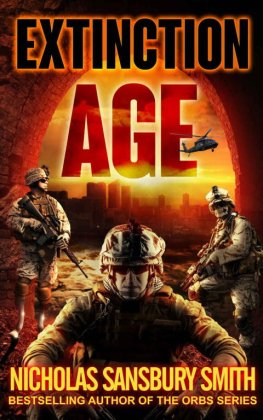
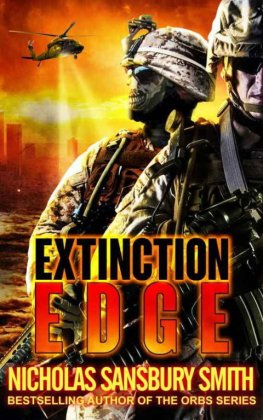

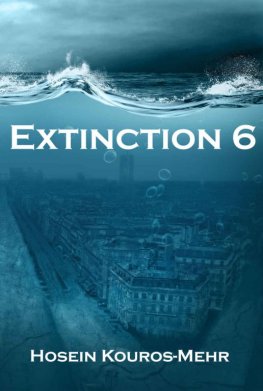
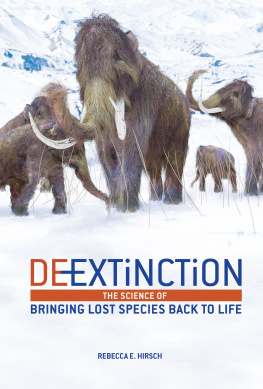
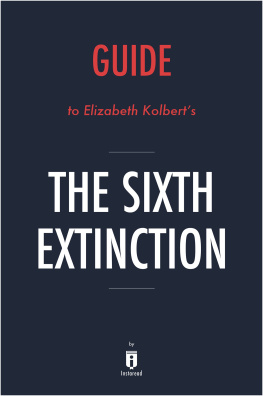
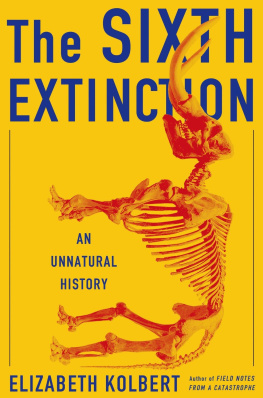
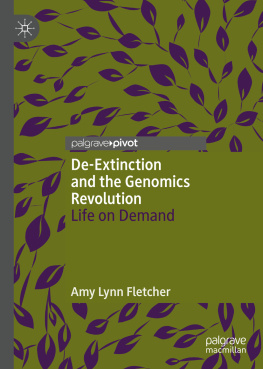
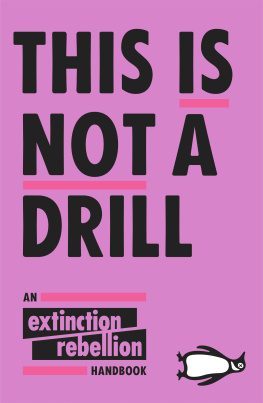
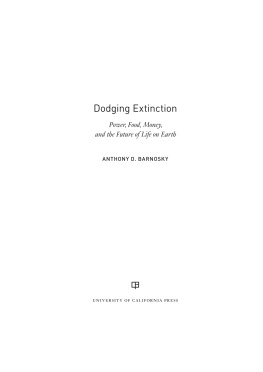
 AFTER EX TINC TION Richard Grusin, Editor After Extinction Center for 21st Century Studies Richard Grusin, Series EditorAfterExtinctionRichard Grusin, EditorCENTER FOR 21ST CENTURY STUDIESUniversity of Minnesota Press Minneapolis London An earlier version of chapter 1 was published as William E. Connolly, Postcolonial Environmentalism, Extinction Events, and Entangled Humanism, in Facingthe Planetary: Entangled Humanism and the Politics of Swarming (Durham, N.C.: Duke University Press), 151 74; all rights reserved; reprinted by permission of the copyright holder. An earlier version of chapter 2 was published as Jussi Parikka, Planetary Goodbyes: Post- History and Future Memories of an Ecological Past, in Memory in Motion: Archives, Technology, and the Social, ed. Ina Blom, Trond Lundemo, and Eivind Rssaak (Amsterdam: Amsterdam University Press, 2016), 129 52. An earlier version of chapter 4 was published as Joseph Masco, The Six Extinctions: Visualizing Planetary Ecological Crisis Today, Environmental Philosophy 14, no. 1 (2017), doi:10.5840/ envirophil201611741.
AFTER EX TINC TION Richard Grusin, Editor After Extinction Center for 21st Century Studies Richard Grusin, Series EditorAfterExtinctionRichard Grusin, EditorCENTER FOR 21ST CENTURY STUDIESUniversity of Minnesota Press Minneapolis London An earlier version of chapter 1 was published as William E. Connolly, Postcolonial Environmentalism, Extinction Events, and Entangled Humanism, in Facingthe Planetary: Entangled Humanism and the Politics of Swarming (Durham, N.C.: Duke University Press), 151 74; all rights reserved; reprinted by permission of the copyright holder. An earlier version of chapter 2 was published as Jussi Parikka, Planetary Goodbyes: Post- History and Future Memories of an Ecological Past, in Memory in Motion: Archives, Technology, and the Social, ed. Ina Blom, Trond Lundemo, and Eivind Rssaak (Amsterdam: Amsterdam University Press, 2016), 129 52. An earlier version of chapter 4 was published as Joseph Masco, The Six Extinctions: Visualizing Planetary Ecological Crisis Today, Environmental Philosophy 14, no. 1 (2017), doi:10.5840/ envirophil201611741.